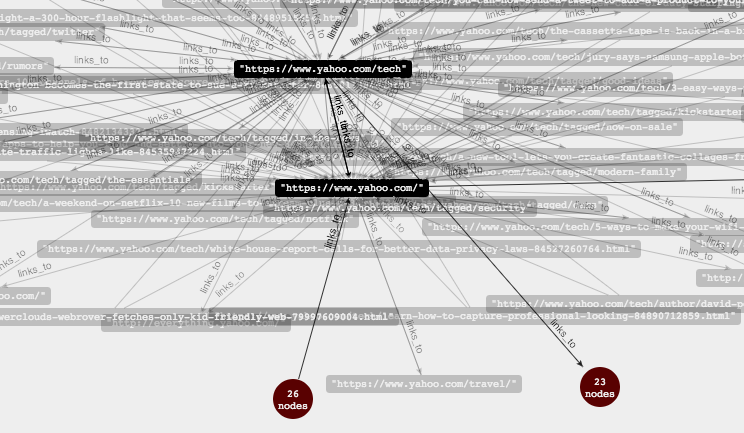creepy-crawler
Ruby web crawler that takes a url as input and produces a sitemap using a neo4j graph database - Nothing creepy about it.
##Installation ####Clone git clone https://github.com/udryan10/creepy-crawler.git && cd creepy-crawler ####Install Required Gems bundle install ####Install graph database rake neo4j:install ####Start graph database rake neo4j:start
####Requirements
- Gems listed in Gemfile
- Ruby 1.9+
- neo4j
- Oracle jdk7 (for neo4j graphing database)
- lsof (for neo4j graphing database)
##Usage ###Code ####Require require './creepy-crawler' ####Start a crawl Creepycrawler.crawl("http://example.com") ####Limit number of pages to crawl Creepycrawler.crawl("http://example.com", :max_page_crawl => 500) ####Extract some (potentially) useful statistics crawler = Creepycrawler.crawl("http://example.com", :max_page_crawl => 500) # list of broken links puts crawler.broken_links # list of sites that were visited puts crawler.visited_queue # count of crawled pages puts crawler.page_crawl_count
####Options DEFAULT_OPTIONS = { # whether to print crawling information :verbose => true, # whether to obey robots.txt :obey_robots => true, # maximum number of pages to crawl, value of nil will attempt to crawl all pages :max_page_crawl => nil, # should pages be written to the database. Likely only used for testing, but may be used if you only wanted to get at the broken_links data :graph_to_neo4j => true }
####Example
examples located in examples/ directory
###Command line # Crawl site ruby creepy-crawler.rb --site "http://google.com" # Get command options ruby creepy-crawler.rb --help
Note: If behind a proxy, export your proxy environment variables
export http_proxy=<proxy_host>; export https_proxy=<proxy_host>
###Docker For testing, I have included the ability to run the environment and a crawl inside of a docker container
##Output creepy-crawler uses neo4j graph database to store and display the site map.
Web interface
neo4j has a web interface for viewing and interacting with the graph data. When running on local host, visit: http://localhost:7474/webadmin/
-
Click the Data Browser tab
-
Enter Query to search for nodes (will search all nodes):
START root=node(*) RETURN root -
Click into a node
-
Click switch view mode at top right to view a graphical map
Note: to have the map display url names instead of node numbers, you must create a style
REST interface
neo4j also has a full REST API for programatic access to the data
##TODO
- convert to gem
- multi-threaded to increase crawl performance
